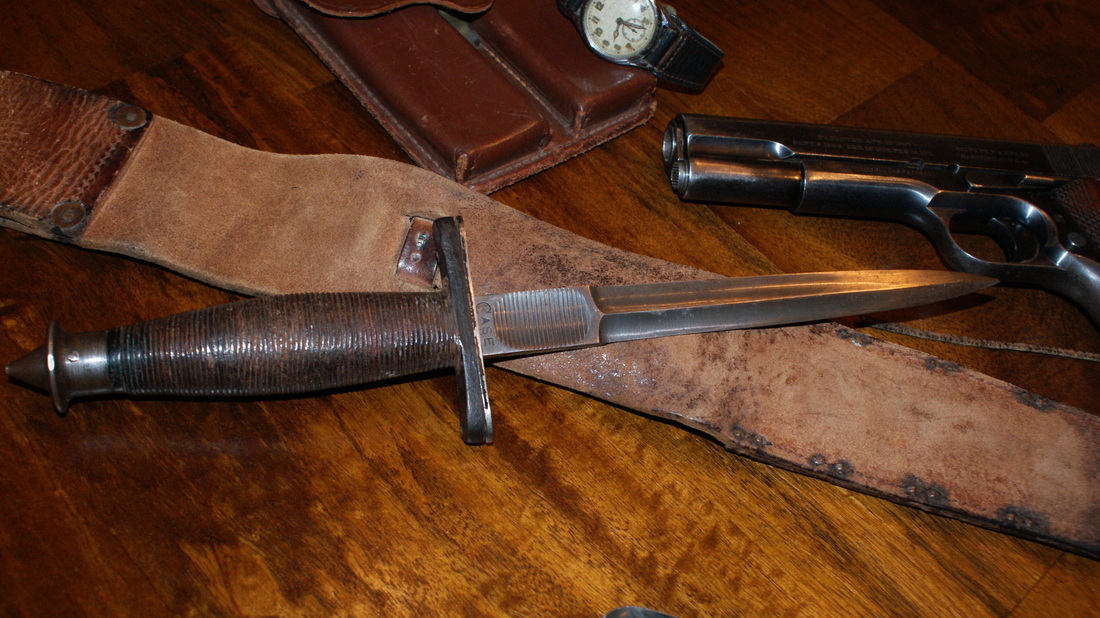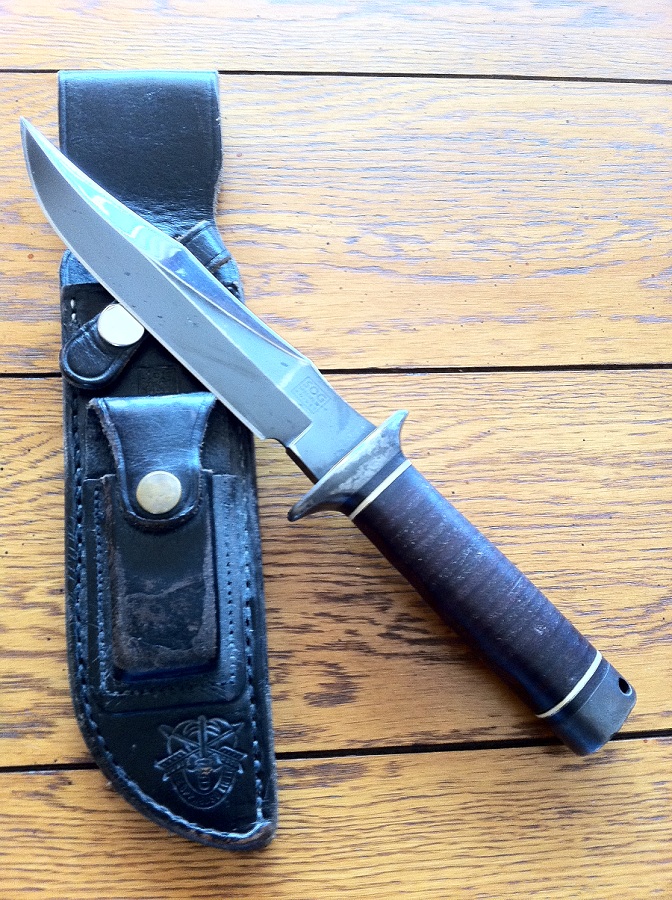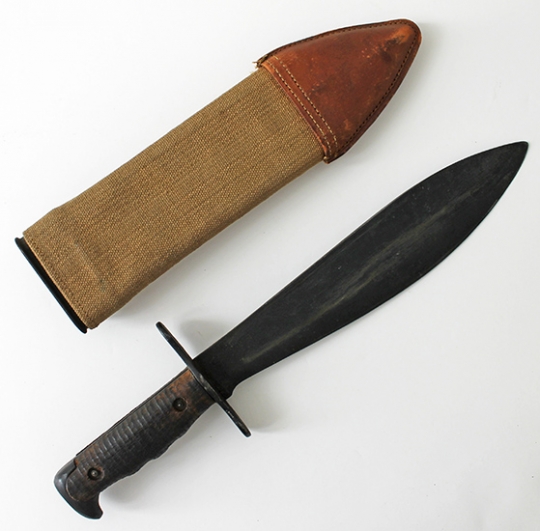on knife coatings
https://agrussell.com/blog/blade-coatings
in particular military
"......
Parkerizing
The Parker Rust Proofing finish, today known as
Parkerizing is a common form of protecting a knife from rust. There are two types of Parkerizing, manganese phosphate which is a dark charcoal black and zinc phosphate which is a lighter gray. At one time or another both forms of Parkerizing were used by the military contractors. Today we hear much about the gray/green color variation, I know of no phosphateing that will give a green color right out of the bath. For this color phenomenon to occur it is usually a contamination of the bath fluid, in most cases Cosmoline is the likely suspect. Another factor in the coloration is the type of steel used and the hardness after heat treating. I have seen many knives with blades of a different color then the pommel. This can be due to being parkerized at different times or the hardness of the different metals. On brass such as scabbard throats and the 1918 Mk1 Trench knife handle a solution of sulphuric acid was used to darken those items, this is not to be confused with a phosphate coating. Parkerizing was a cheap easy way to prevent rust, that was the main goal of it for military applications. Bluing was much more time consuming, the product had to be buffed quite considerably before even getting to that stage which increased manpower and cost. In many cases Parkerizing can be brought back to life with a small application of oil, it does tend to darken up the color a bit, just like the brown or green Micarta handles on an older Randall. Add oil and they return to the original black...."
http://www.usmilitaryknives.com/knife_knotes_2.htm
guess the coatings were primarily for
dealing with rust.
the natural resulting effect often darkens metal.
low glare from rust coatings may have been entirely a coincidental "tactical" feature that
was keenly noted for its "stealth" feature.
reflective surfaces gives away positions.
this included evertything on a soldier
which reflected light, like for instance
buttons and buckles which were done away with, tucked away hidden or dulled.







